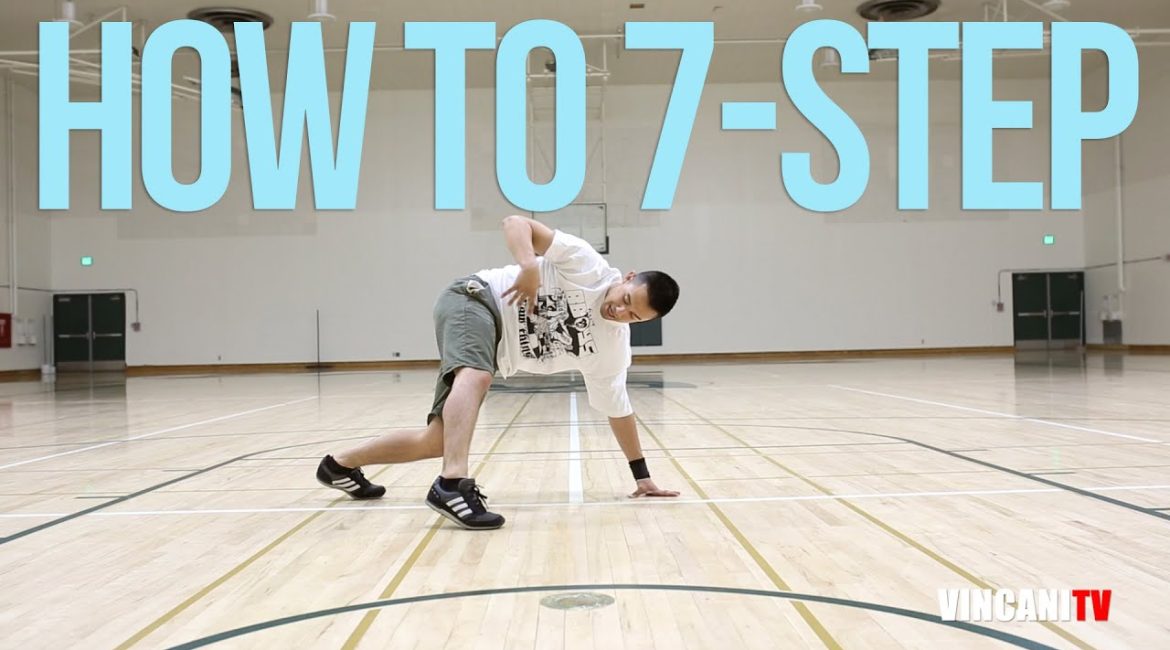Breakdancing, a cornerstone of hip-hop culture, is not just about explosive power moves or eye-catching freezes; it’s also deeply rooted in the intricate art of footwork. Among the essential steps every b-boy or b-girl should master is the 7-Step. This tutorial is dedicated to breaking down the 7-Step, a dynamic and circular footwork pattern that distinguishes itself from the popular 6-Step. With dedication and practice, this step can significantly enhance your dance vocabulary and your ability to move fluidly across the floor.
Understanding the 7-Step
The 7-Step, like its cousin the 6-Step, moves in a circle and involves a sequence of movements that are both rhythmic and physically demanding. However, it’s crucial to differentiate the 7-Step to ensure it stands out as a distinct element of your dance routine.
The 6-step is a fundamental sequence in breakdancing, consisting of six steps that form the basis of footwork. During these movements, your feet step around your upper body, and you place and move your hands for support. The 6-step can be repeated indefinitely because it ends in the same position where it started. A well-executed 6-step requires balance, rhythm, flow, and perfect form.
When you begin breakdancing, you’ll typically start by learning the 6-step, as it is one of the most crucial basic footwork steps. Mastering the 6-step will pave the way for learning other footwork moves, such as the 2-step, 3-step, and 5-step, which incorporate elements of the 6-step. Therefore, mastering the 6-step first will facilitate learning these other footwork patterns.
Starting Position
Begin in a push-up position. This starting posture is critical as it sets the foundation for the fluidity and quickness of your moves. Keep your hands aligned with your inner ankles to ensure agility and minimize wrist strain, which is common in breakdancing due to the pressure placed on the hands.
Step-by-Step Guide
- Step One: From the push-up position, shift your weight and place your right hand closer to your left hand while stepping your left foot to the outside of your left hand.
- Step Two: Lift your right leg and step over your left leg, placing your foot down near where your left hand is placed. This movement should be swift and light.
- Step Three: As you complete the step-over, lift your hips slightly and pivot on your right foot, swinging your left leg under your right leg.
- Step Four: Hook your left foot around your right leg as you continue to pivot.
- Step Five: Unhook and step back with your left foot, preparing to transition to the next step.
- Step Six and Seven: These involve a combination of stepping and switching positions to return to your original setup for the push-up position, completing the circular motion.
Each step should be executed on the balls of your feet to maintain speed and lightness in movement.
Training Tips for the 7-Step
Practice Consistently
The key to mastering the 7-Step is consistent practice. It’s not enough to perform the steps correctly; you must do them so frequently that they become second nature.
- Repetition: Repeat the 7-Step sequence continuously during your practice sessions. Start slowly to ensure correct form and gradually increase your speed as you become more comfortable.
- Record and Review: Use video recording to track your progress. Reviewing your sessions can help you identify areas for improvement and ensure your movements are crisp and precise.
Differentiate Your Style
While the 7-Step has a standard form, adding personal flair is crucial. Experiment with different hand placements, speeds, and rhythmic variations to make the 7-Step uniquely yours.
- Personal Touch: Incorporate arm movements or body waves between steps. These additions can enhance the visual appeal of your footwork.
- Music Interpretation: Practice your 7-Step to various music styles and tempos. This practice helps adapt your movements to any beat, making your footwork versatile and unpredictable in battles.
Incorporate into Freestyle
Once you feel comfortable with the mechanics of the 7-Step, start integrating it into your freestyle sessions.
- Seamless Transitions: Work on transitioning in and out of the 7-Step from other footwork patterns, top rocks, or freezes. This integration will improve your overall flow and performance.
- Battle Testing: Use the 7-Step in dance battles to gauge its effectiveness and to get comfortable performing it under pressure.
Conclusion: Elevate Your Breakdance Routine
Mastering the 7-Step is about more than just learning a new move; it’s about enhancing your overall dancing capabilities and expressing your creativity through movement. As you practice, remember that every step is an opportunity to improve, to innovate, and to prepare for the dynamic world of breakdancing battles and performances. With dedication and creativity, the 7-Step can become a signature part of your dance style, captivating audiences and distinguishing you from your competitors. Keep pushing your limits, and let every practice session move you one step closer to breakdancing excellence.


Leave a reply